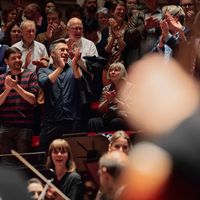About this concert
Once again, our chief conductor designate Klaus Mäkelä is following in the footsteps of Gustav Mahler. Since Mahler first led the orchestra in his Symphony No. 5 in Amsterdam in 1906, we have performed the work 130 times. It took Amsterdam’s concert-going audiences some time to embrace the kaleidoscopic symphony; the great contrasts it encompasses evoke emotional extremes. ‘Each movement has its friends and foes,’ Mahler once said. Yet the Adagietto, the symphony’s very lifeblood, seems to have only friends. According to Willem Mengelberg, the orchestra’s then chief conductor who maintained close contact with the composer, this movement was a pure declaration of love to Mahler’s wife Alma.
Luciano Berio, one of the leading composers of the twentieth century, was born 100 years ago. His fascinating Rendering is based on Schubert’s fragmentary sketches for a tenth symphony. Berio was commissioned to compose this fascinating ‘homage to Schubert’ by the Concertgebouw Orchestra, which performed the world premiere in 1990 under its then chief conductor Riccardo Chailly. The work would become the most successful of Berio’s ricomposizione (recompositions).
The Adagietto, the symphony’s very lifeblood, seems to have only friends.

